
Editor's Note:
Throughout the long history of Hainan, different cultural treasures have emerged in many parts of the island. This series, titled ‘Rebirth of Cultural Relics’, will systematically sort through these ancient wonders, delve deeply into the stories and meanings behind them, and bring them back to life as more and more people begin to understand what makes them so special.
Grain patterns are a common decorative pattern on ancient Chinese jadeware. This motif looks like small, clustered dots. What do these grain patterns imply? What were jade discs used for by the ancients? This issue of "Rebirth of Cultural Relics" is about a Warring States Period (475 BC to 221 BC) jade disc with a grain pattern.
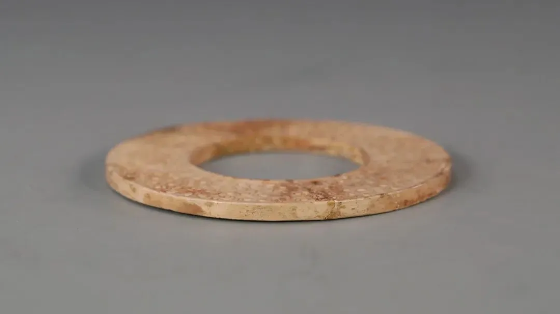
Warring States Period Jade Disc with Grain Pattern. In the collection of the China (Hainan) Museum of the South China Sea
Rebirth
Hello everyone! I’m a jade disc with a grain pattern from the Warring States Period, and I currently reside in the China (Hainan) Museum of the South China Sea. I have a diameter of 10.4 cm. and a thickness of 0.5 cm., and am a second-class cultural relic. Jade discs with grain patterns were popular during the Warring States Period due to the large number of farmers, and symbolized a bumper harvest and the rejuvenation of all things. I embody the ancients' aspirations for a better life.
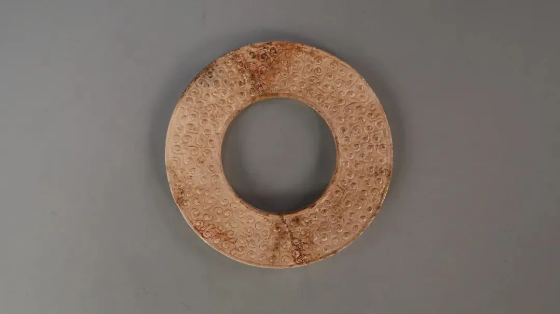
Warring States Period Jade Disc with Grain Pattern. In the collection of the China (Hainan) Museum of the South China Sea
Jade discs held a prominent position in ancient Chinese jade culture. They date back over 5,000 years to the Neolithic period (10,000 BC to 2,000 BC). Jade discs with different patterns and shapes were made through the Qing Dynasty period (1616 to 1912).
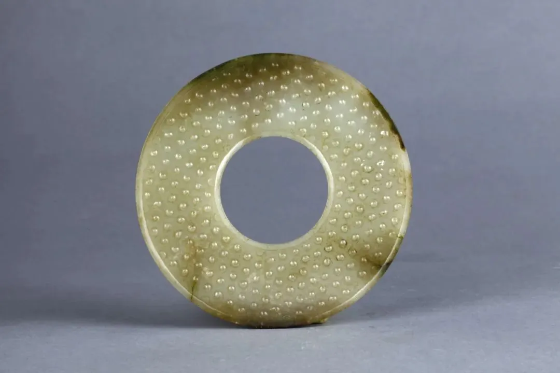
Warring States Period Jade Disc with Grain Pattern. In the collection of the Xuchang Museum
Jade discs were used in rituals by ancient nobles and also functioned as decorative items and keepsakes in different historical periods and circumstances. Jade discs had four main functions:
1. Sacrificial and ritual items. Jade discs often appeared in important national sacrificial ceremonies.
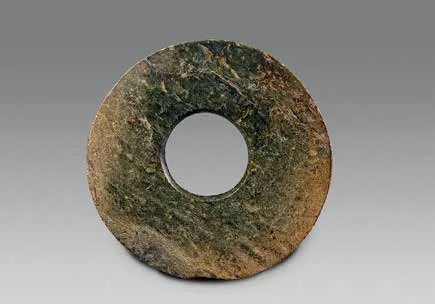
Jade Disc (Qijia Culture). In the collection of the Dunhuang Yangguan Museum
2. Adornment and decoration. Many jade discs were worn as ornaments in the past, and were important symbols of power.
3. Tokens or gifts. Due to their extremely high value, jade discs were often regarded as auspicious tokens of appreciation or gifts.
4. Funerary objects. Since the Spring and Autumn Period and the Warring States Period, jade discs were often used as funerary objects for ancient emperors and nobles.
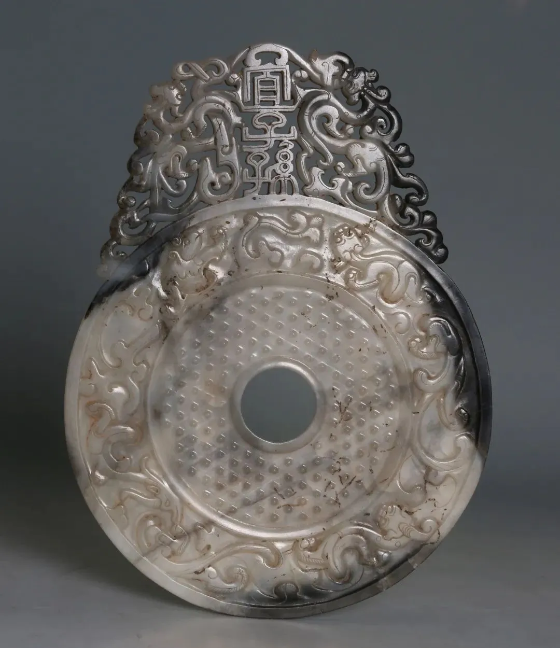
A jade disc known as "Beneficial to Descendants" of the Eastern Han Dynasty that functioned as a burial item. In the collection of the Qingzhou Museum.
The Warring States Period Jade disc with a grain pattern located in the China (Hainan) Museum of the South China Sea was one of the 22 lost cultural relics and artworks returned to China by the United States in 2015 thanks to the Sino-US Memorandum of Understanding. It was allocated to the China (Hainan) Museum of the South China Sea by the National Cultural Heritage Administration in 2018. If you have the opportunity, be sure to visit the museum and see this precious cultural relic that once was lost and has now returned home!
Overseas Chinese Architecture in Hainan ④: Shibahang Village’s Code of Unity
05:47, 27-June-2025World Insect Week: Fantastic Flying Creatures in Hainan’s Rainforests
05:47, 27-June-2025Yangpu International Container Terminal Opens Direct Shipping Route to India
05:47, 27-June-2025It's time for Hainan "Village VA"!
03:13, 26-June-2025Surprise Delivery of Hainan Gifts!
03:13, 26-June-2025One invitation and they came to Hainan right away! Look, they are arriving!
03:12, 26-June-2025By continuing to browser our site and use the services you agree to our use of cookies, Privacy Policy and Terms of Use. You can change your cookie settings through your browser.





